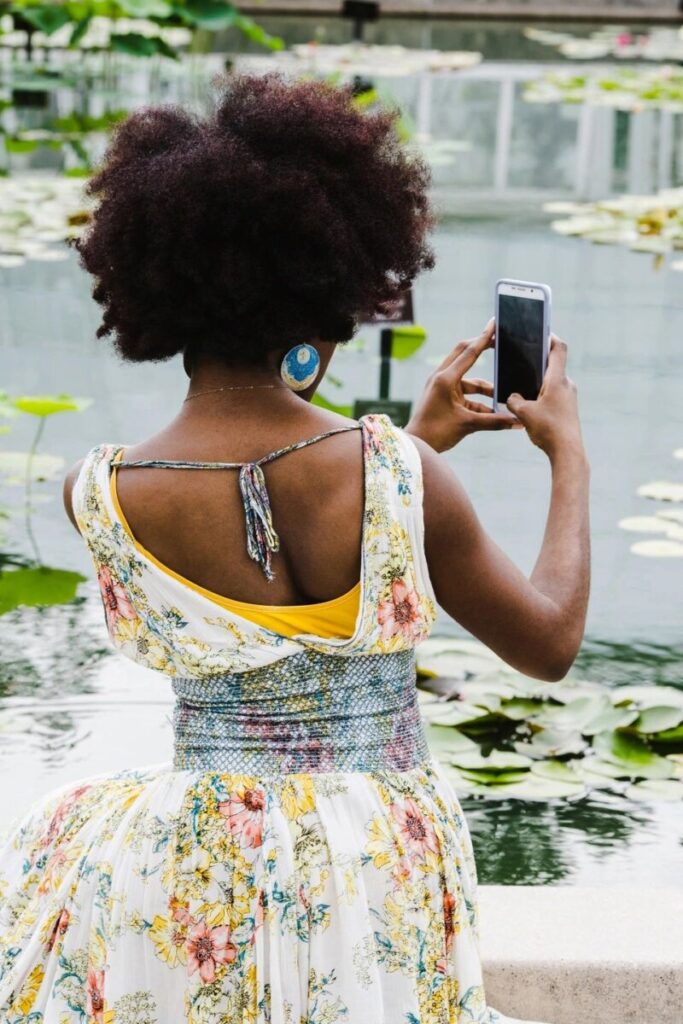Every new business wants to be noticed, and social media should be an important part of every entrepreneur’s marketing strategy. But that strategy can be undermined if the imagery is week. Here are a few pointers.
Get the lighting right
The number one rule is: don’t use your flash. Nine times out of ten you won’t need it and it’ll only add glare and shadow that will make your photo look tacky. The only time you’ll need to pop the flash on is when you have a bright background and the foreground is silhouetted.
Rather than using a flash, find a selection of lights that you can place strategically around the product to create interesting highlights and shadows. Consider the colour of the lights as well. Not all ‘white’ lights are the same shade of white ─ some will be warmer and more yellow while others may be colder and bluer.
Mixing colours can work but it needs to be done with care otherwise it will look messy. If you are working on developing your photography skills, it is best to start off with the same colour of white lights and go from there. If you want to add some colour later, you can always apply filters using photo editing software.
Avoid unhelpful shadows
Once you have got some lights set up, it’s time to play around with their position. The idea is to highlight features while also creating a bit of shadow to achieve an interesting contrast.
How much light versus shadow you’ll want might depend on the product being photographed. Luxury items tend to have more contrast, giving them a cooler, classier vibe. Technical products with lots of features and accessories can benefit from more light to show off the details.
Try to avoid actual shadows, however, as they look unprofessional. The way to do this is to ensure that some of your lights are focused on the area surrounding your product and the background. These lights will wash away any shadows, leaving a clean, professional photo.
Clear Clutter
The first rule of good composition is to only include necessary items in the shot. Lots of clutter is distracting and unprofessional. Even if you want to show the product in-situ, it is important to clear away anything that does not need to be there.
You could, for example, remove everything except for the product. This will focus the eye on the product and can be useful for both technical and luxury items. If, however, you want to take an action shot ─ perhaps a luxury spirit being enjoyed at a bar, for example ─ you could clear the table of any unused glasses or other distractions and use depth of field to ensure the background noise is blurred out.
It can also be a good idea to consider these shots in black and white, helping to minimise the distraction of lots of colours cluttering the image visually.
Play around with props
While clutter looks messy, a few well-positioned props can add context and make the image more interesting. Props also suggest things about the product. A packet of vitamins on its own could be quite boring. A packet of vitamins next to an orange, however, implies health and vitality.
Similarly, for things like drinks where there may be several key ingredients, showing those ingredients lying next to a cup and the product gives the impression that the flavour has been freshly distilled.
Props can be as simple as an orange or more involved, like a costume and other physical props for people in the photos. A holiday is hard to capture, for example, but some sun cream and a pair of shades is enough to get people thinking of warm sandy beaches.
Consider the angle
One of the more common mistakes is to shoot product shots straight on. It seems like it would be clearer, less cluttered and more symmetrical but it can actually be quite confusing to the eye. There is no sense of depth, making it unclear how large the product is and it can often feel very unnatural.
The angle can also play a role in the overall impact. Shooting from a low angle can make the product appear large, powerful and intimidating. This could work well for a car, for example, or even for some portraits. A slightly raised angle can make the product seem smaller and give the viewer a ‘god’s eye’ perspective, making them feel powerful and in control.
Side angles, on the other hand, are more about creating a natural look. Rarely do we ever see something precisely straight on and it is this slight side angle that provides a sense of detail, depth and clarity.
Follow the rule of thirds
A final point on composition: work to the rule of thirds. That is, try to think of the space as broken into thirds vertically and horizontally, lining up the objects along these lines. For just one object, try to get it in the centre square. For two objects, line them up in the middle of the horizontal section and along the vertical third lines.
Not only does using the rule of thirds help keep the negative space to the edges balanced (you don’t want lots of space on one side and little on the other) but it also guides the eye to the most important features of the photo. This is particularly important when you have a noisier background or you are using multiple props. You don’t want people focusing on the table rather than the product sitting on top of it!
Get an appropriate background
Every photo has a background (unless you are doing a super close-up) so make the background work to your advantage. You could opt for a simple white or coloured sheet to bring focus to the foreground, but just make sure that any creases or folds are either obscured or work to your advantage.
You could pin the top of the sheet in the middle to give a draped look, like theatre curtains. Or perhaps try rumpling the sheet around the product to make it look cosy and luxurious.
Alternatively, you could get really creative with your backgrounds, perhaps creating a diorama that captures the season, for example. But make sure that the background is appropriate for the product and other props: don’t put your multivitamins and orange on a winter themed background as it will look out of place.
Take multiple snaps
The big secret to getting the perfect snap is to take lots of photos and then find the perfect one later. Photographers do a good impression of making it look like they’ve perfected everything straight away, but they’ve just deleted the ones that didn’t work.
Taking multiple photos also gives you more to work with later. When editing, you might find that the orange looks perfect in one shot but the multivitamins don’t. Fortunately, if you have multiple snaps, you can find one that the vitamins look good in and copy it over, compiling the perfect photo from two or three different photos.
With multiple photos taken from different angles and with different props, you also have the opportunity to post different photos to your social accounts. This way, your followers won’t get bored of seeing the same image over and over again!
Tweak
No matter how good your photography skills are, every shot can benefit from a little tweaking. Whether you use Instagram’s built-in filters or you dive into the detail on an editing package like Photoshop, a perfect photo needs to pop.
It is also a good idea to create a consistent style that you can replicate and ‘own’. You could go for a sharp focus, oversaturated look, for example, to create a bold, colourful style. Or go the other way, bring the contrast and saturation down to create a vintage feel.
A vignette is almost always a good idea. If you’ve stuck to the rules of thirds, all your visual information should be towards the centre of the image. A vignette will darken the corners of the image ensuring that the focus is always brought back to the centre.
If you find that, despite your best efforts, the background is too noisy, then playing around with depth of field can really help. While this is best done using your camera to ensure the sharpest details, it can also work in editing to blur the background and ensure that your products are always sharply in focus.
Try different crops
While you’re playing around with your edits, try out different crops on your photos. If you stick to the rule of thirds there is almost no wrong answer when it comes to cropping.
You could find that lots of negative space around the product gives a simple, easy feel to the image. However, lots of negative space can also be distracting in some situations, so cropping in close will help bring focus to the product.
ABOUT THE AUTHOR
Emeka Ikechi is Director of Vanity Studios, a contemporary studio for photoshoots in the centre of Shoreditch in London. Since 2009 Vanity Studios has been providing clients with high quality professional photos and an excellent photoshoot experience. The team of photographers and make-up artists ensure each client receives bespoke photography that meets their requirements.
Web: https://vanitystudios.co.uk/
Instagram: @vanitystudiosuk
Facebook: @vanitystudiosuk
Twitter: @vanitystudiosuk
LinkedIn: https://www.linkedin.com/company/vanitystudiosuk/






